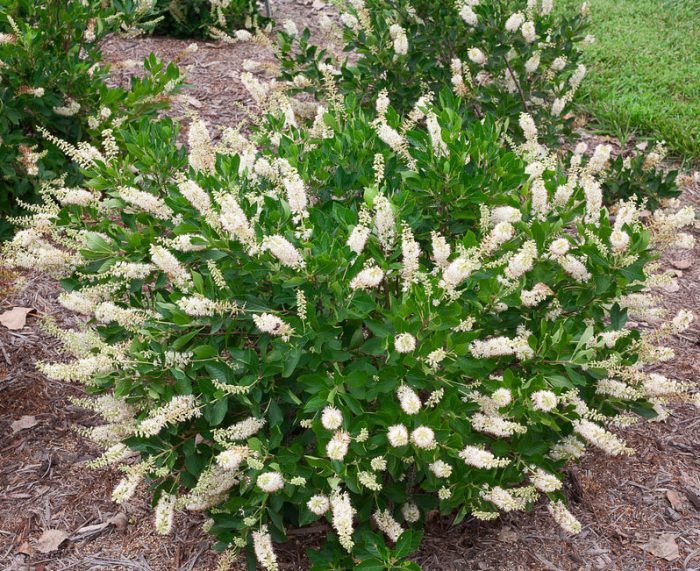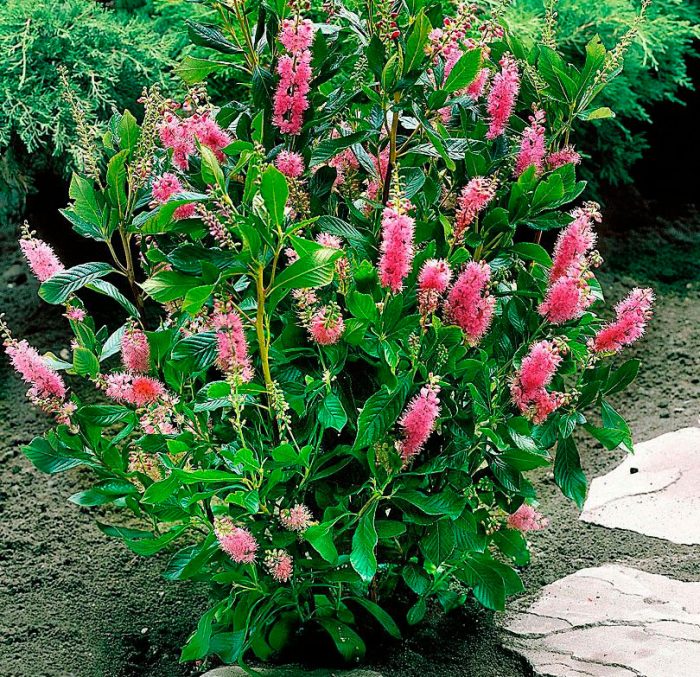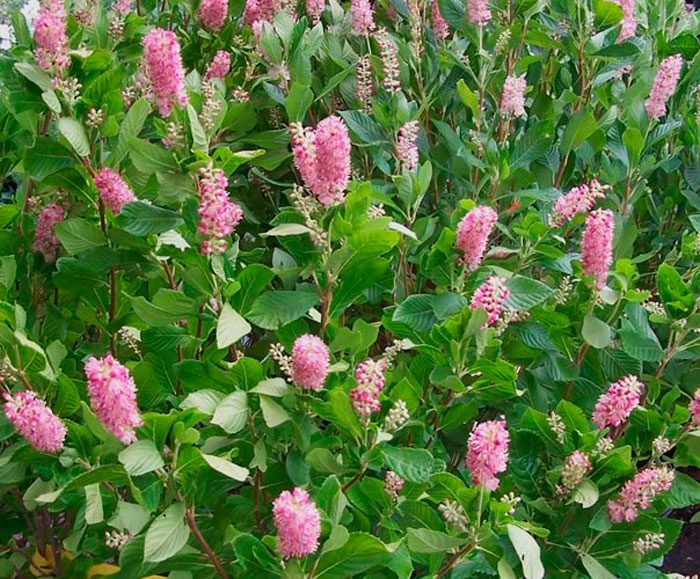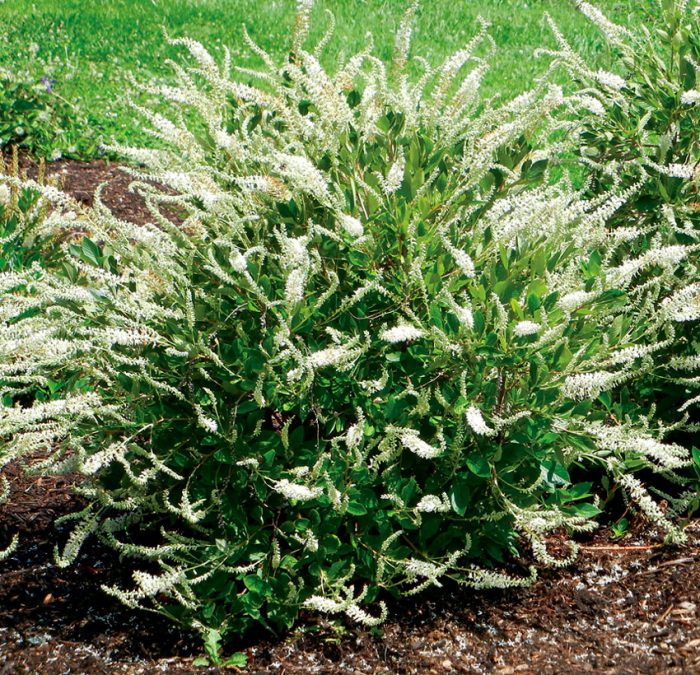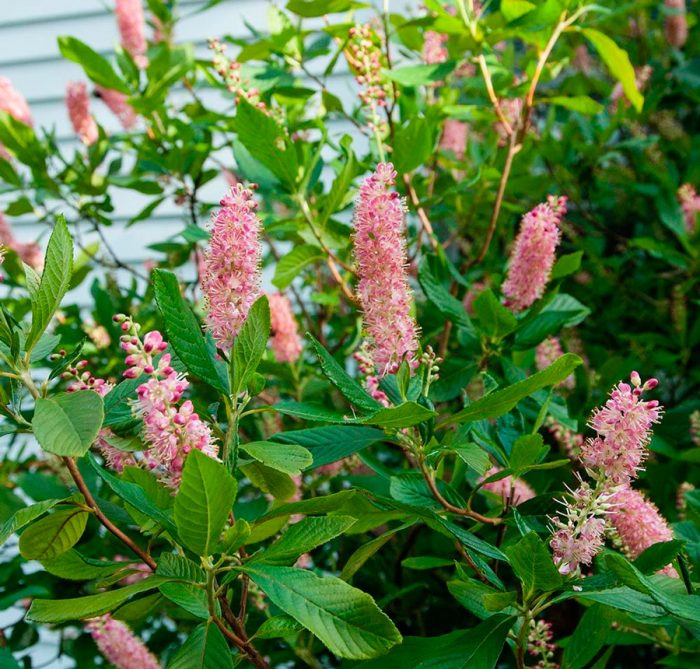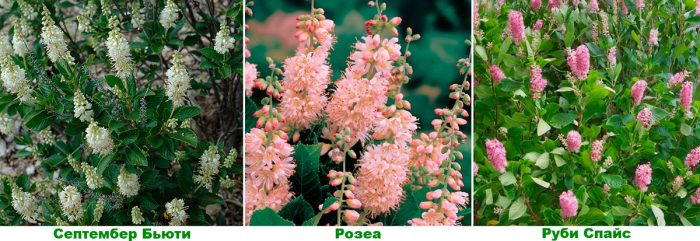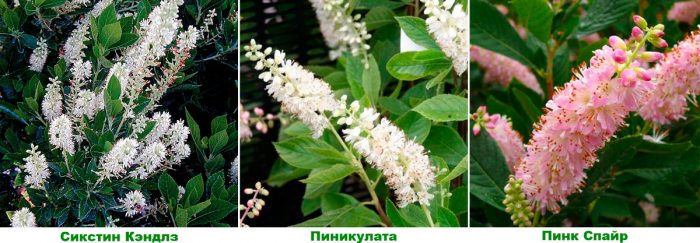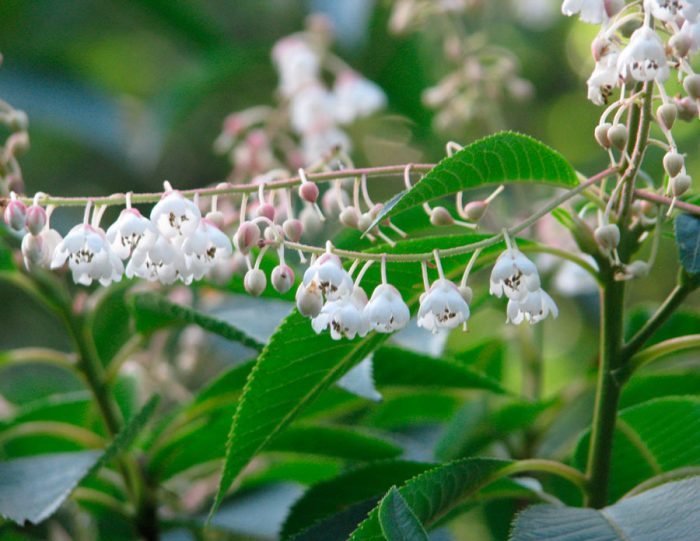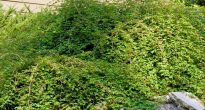Cletra (Clethra) is represented by evergreen and deciduous woody plants, and it belongs to the Clethra family. In nature, such a culture prefers to grow along the banks of swamps and streams. The genus includes about 80 species. The type species is alder-leaved cage. Some of the species are popular with gardeners.
Content
Features of the cage
Cletra is represented by trees and shrubs, which have a superficial root system with a large number of branches and several tap roots. There is a hairy pubescence on the surface of the stems. Solid alternate leaf plates appear only in the last days of May; they have a serrated edge. Flowering begins in the last summer or first autumn weeks. The apical inflorescences can have a paniculate or racemose shape, they consist of bisexual fragrant flowers of white color, which outwardly are very similar to the flowers of bird cherry. The fruit is a capsule.
Although there are vigorous species in the genus, miniature forms are popular among gardeners, reaching no more than 100 cm in height. Such a plant is perfect for creating a hedge, as well as for decorating rock gardens.
Planting a cage in open ground
What time to plant
For the cage, you should choose an area with drained, well-moisturized and acidic soil, which should be sandy-humus. And least of all, nutritious and alkaline soils are suitable for growing it. As for the illumination, such a plant prefers shaded places; in extreme cases, you can choose an area for it that is protected from direct sunlight from 12 to 16 hours. Landing in open ground is recommended in May.
Landing rules
Prepare a planting hole, which in diameter and depth should reach 0.5 m, at its bottom make a drainage layer about 15 centimeters thick. Place the seedling in the pit and after its roots are straightened, fill the hole with a prepared soil mixture, which should include sand, forest coniferous soil and peat (1: 1: 3). A small amount of sawdust, and another 80 grams of sulfur, need to be poured into the finished soil mixture.The planted plant should be watered with a vinegar solution (for 1 bucket of water 100 mg of vinegar (6%)), after the liquid is absorbed, the surface of the trunk circle is slightly compacted and the bush is watered again.
Caring for the cage in the garden
In order to successfully grow a cage in your garden plot, you need to water, feed, weed, pinch, trim, and also loosen the surface of the trunk circle, remove shoots, cover for the winter, and, if necessary, protect it from harmful insects and diseases. In order to significantly reduce the number of weeding, loosening and watering, it is recommended to cover the surface of the trunk circle with a layer of mulch (peat, sawdust or wood chips).
Pruning
Formative pruning can only be carried out in the autumn, when the bush has faded. The fact is that in such a plant, inflorescences are formed on young shoots that have grown in the current season. And sanitary pruning can be carried out both in the spring (before the start of sap flow) and in the fall, for this, branches and stems injured, damaged by disease or frost, as well as those that grow incorrectly, are removed.
Shelter for the winter
When grown in mid-latitudes, adult cages can hibernate without shelter, since they have a fairly high resistance to frost. However, while the plant is young, it needs shelter for the winter, for this, in late autumn, the bush should be covered with spruce branches or dried foliage.
How to water
Since this crop reacts extremely negatively to drought, it must be watered abundantly and quite often. During a long dry period, special attention should be paid to watering, make sure that at this time the soil in the near-trunk circle is constantly moderately moist. The bush should be watered with well-settled water, which has warmed up in the sun during the day. Watering is recommended in the early morning or in the evening (not earlier than 4 pm), while trying to prevent water droplets from falling on the surface of the leaf plates.
Top dressing
In the year of planting, a young seedling will not need additional fertilizing. It is recommended to feed older bushes shortly before flowering with liquid complex mineral fertilizer.
Cage pests and diseases
If excessively high humidity of the air and soil is observed for a long time, then the likelihood that the bush will be affected by late blight increases. In this case, specks of gray color appear on its branches, the shoots sag and begin to dry out. All diseased parts of the bush are cut off, and 3 treatments are carried out with a break of 7 days, for this they use Fundazol or Topaz.
Another bush can get sick with powdery mildew, in this case, specks of a whitish color are formed on the surface of its aboveground part. The affected plant must be sprayed with a solution of a product that contains copper or sulfur, for example: Bayleton, Fundazol, Topaz or Topsin.
Also, such a plant can be affected by a viral disease, which poses the greatest danger to it. The fact is that today such diseases are considered incurable. In the affected cell, the color of inflorescences and stems changes. After the first symptoms of the disease are noticed, all diseased parts of the bush must be cut out and destroyed. Watch the plant for some time, if signs of the disease appear again, then it will have to be removed from the ground and destroyed.
Also, scale insects can settle on the cage. This sucking insect sucks the plant sap from the bush. To get rid of it, the bush is sprayed with an insecticide solution or soap dissolved in water.
Types and varieties of cages with photos and names
As mentioned above, only a few types of cages are cultivated by gardeners.
Alder-leaved cage (Clethra alnifolia)
The homeland of such a shrub is the eastern part of North America. In height, it can reach about 200 cm. Flowering begins in the last days of July.The length of straight pyramidal inflorescences is about 15 centimeters, they consist of fragrant flowers. Inversely ovate leaf plates have a serrated edge and are about 10 centimeters long. At a young age, in the fall, they turn yellow. The best varieties:
- September Beauty... This late variety begins to bloom in September. The color of the inflorescences is white.
- Rosea... The color of the flowers is pale pink.
- Ruby Spice... The inflorescences are composed of dark pink flowers.
- Creel Calico... Variegated variety.
- Sixteen Candles and Himmingbird... Miniature varieties. The height of the bushes reaches no more than 100 cm.
- Piniculata... The branches of the bush are curved. Compared to the main species, such a plant has white inflorescences of large size.
- Pink Spire... The color of the flowers is bright pink.
Cage of barbaceous (Clethra barbinervis), or Japanese cage
The homeland of this species is the Japanese islands. The Japanese cage can be up to 10 meters high. The surface of the trunk is covered with greenish-gray peeling bark, on the surface of which there are brownish-yellow spots. Inversely ovate bright green leaf plates are 5–15 centimeters long, with sharp-toothed edges. In autumn, they turn yellow or red. Flowering begins in June and ends in September. The length of the pyramidal inflorescences is about 15 centimeters, they include fragrant white flowers.
Clethra delavayi
This species comes from China, it is represented by erect shrubs or small trees. Plant height is about 10 meters. The length of the rich green leaf plates is about 15 centimeters, their edge is serrated. In the second half of summer, pink buds form, from which fragrant flowers of a yellowish-white color then appear.
Tree cletra (Clethra arborea), or lily of the valley
In natural conditions, this species can be found in the Madeira archipelago. The height of the tree is about 300 centimeters, the color of its bark is brown. On the surface of young shoots and leaves, there is pubescence, represented by a red hair. The length of the oblong-ovate or elongated-lanceolate leaf plates is about 12 centimeters, their edge is serrated. The brushes are up to 15 centimeters long and are composed of white flowers.
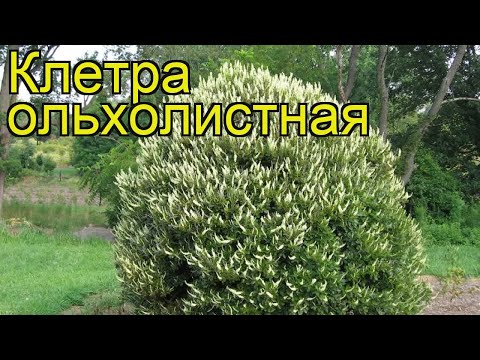

Watch this video on YouTube


